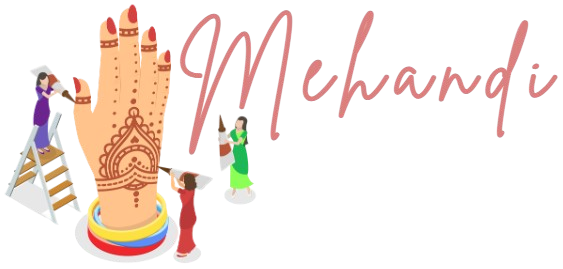Mehandi, also known as henna, is not merely an element of cultural significance—it is an art form that transcends regions, generations, and occasions. Its application is a centuries-old tradition, found in Indian, Arabic, Pakistani, and North African cultures. Whether it is a wedding, festival, or casual adornment, mehandi designs continue to play a central role in beauty and fashion.
Historical Roots of Mehandi Art
The origins of mehandi art trace back to ancient Egypt and India, where it was used for both decorative and therapeutic purposes. Traditionally, the paste is made from crushed henna leaves, mixed with water, lemon juice, and essential oils to create a natural dye. Its cooling effect made it a favorite in hot climates, and over time, it gained popularity as a form of body art.
In Indian culture, mehandi is deeply rooted in customs and is considered a symbol of positivity. Applying it during weddings, Karva Chauth, Eid, and other auspicious occasions is seen as a way to invoke blessings.
Types of Mehandi Designs
There are various styles of mehandi art, and each type reflects the heritage and creativity of its origin.

1. Popular Mehandi Design Styles
| Style | Origin | Features |
| Indian | India | Fills palm with intricate motifs |
| Arabic | Middle East | Bold lines and floral motifs |
| Pakistani | Pakistan | Combination of Indian and Arabic |
| Moroccan | Morocco | Geometric and tribal patterns |
| Western | Global | Temporary tattoos, minimalist style |
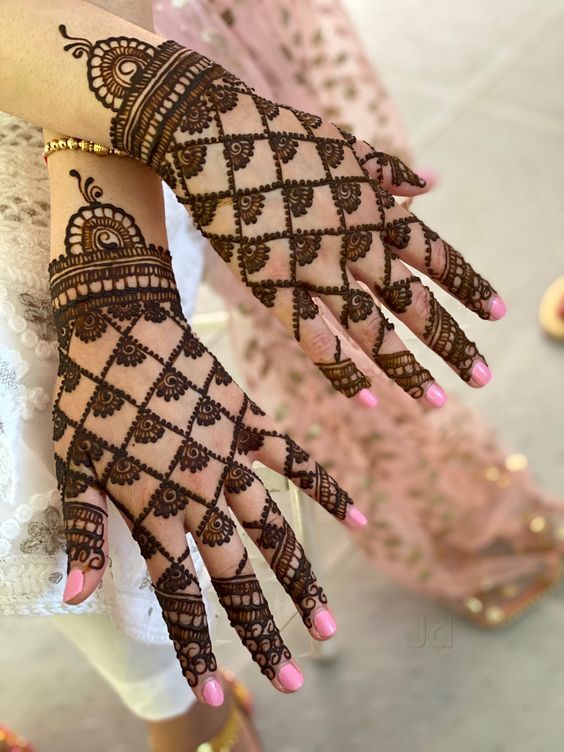
3. Importance of Mehandi in Indian Culture
The presence of mehandi in ceremonies is not just about aesthetics; it holds cultural symbolism. It represents joy, good luck, and prosperity. Especially in Indian weddings, the mehandi design front on a bride’s hands is not just for decoration but reflects emotion, love, and tradition.
A popular belief is that the darker the mehandi stain, the deeper the love between partners. This emotional connection to a seemingly simple leaf paste makes the tradition even more endearing.
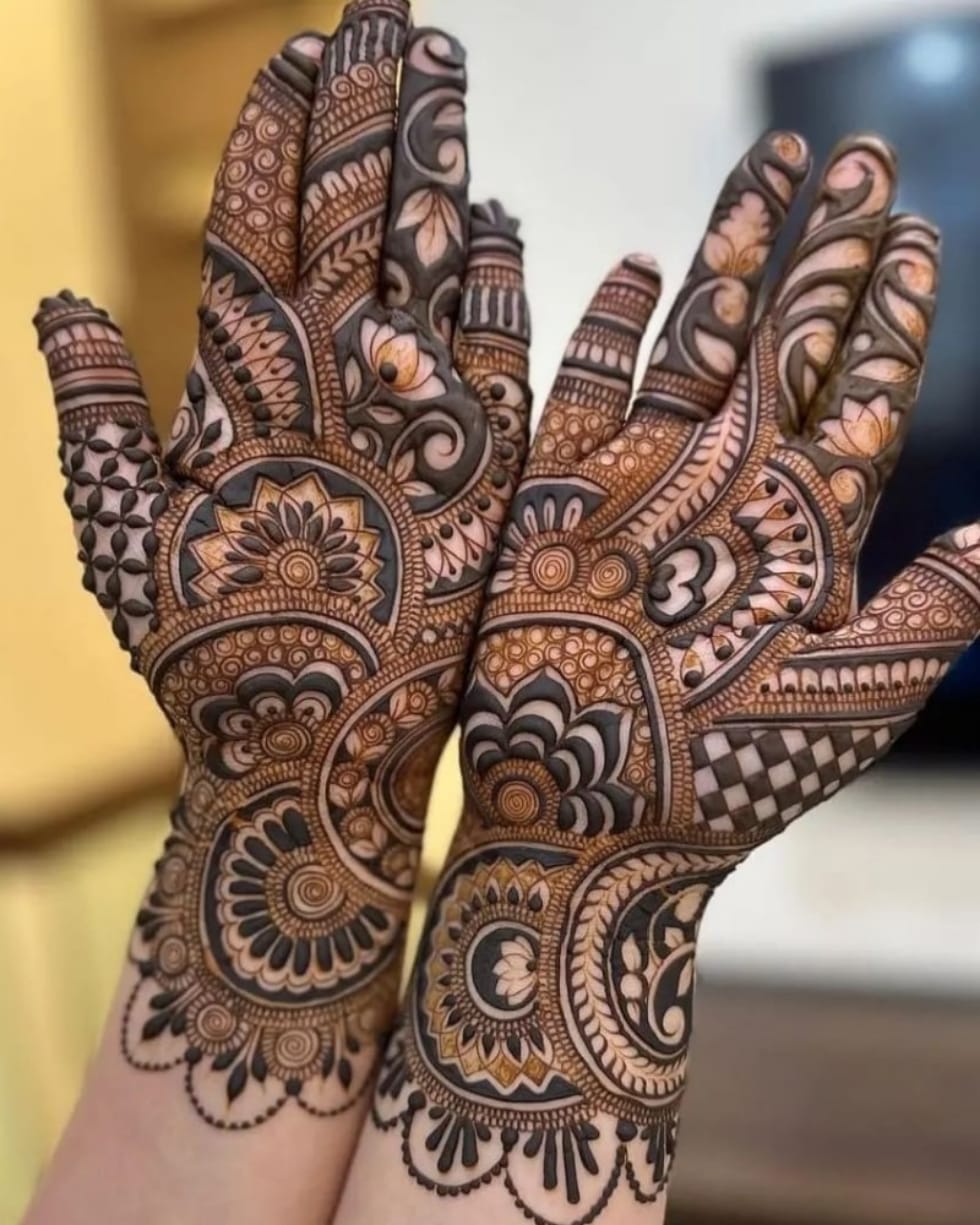
3. Modern Adaptation and Innovation
Today’s generation blends tradition with innovation. Digital platforms are flooded with creative mehandi designs, offering endless inspiration. Mehandi artists now experiment with new shapes, patterns, and colors to make every design unique.
Social media has significantly influenced how trends evolve. Brides and artists frequently post their unique mehandi art, making it easier for others to find inspiration for their big day.
4. Understanding Mehandi Patterns
Mehandi patterns range from simple to highly intricate. Each element has its own meaning. Here’s a quick guide:

Common Mehandi Motifs and Their Meanings
| Motif | Symbolism |
| Peacock | Beauty and elegance |
| Paisley | Fertility and luck
|
| Lotus | Purity and enlightenment |
| Meshwork | Protection |
| Mandala | Unity and completeness |
| Mehandi bel | Graceful flow and continuity |
The mehandi bel, which translates to a henna vine, is a recurrent element in many patterns. It adds continuity and elegance to any mehandi design, weaving through the palm or fingers like nature’s thread.
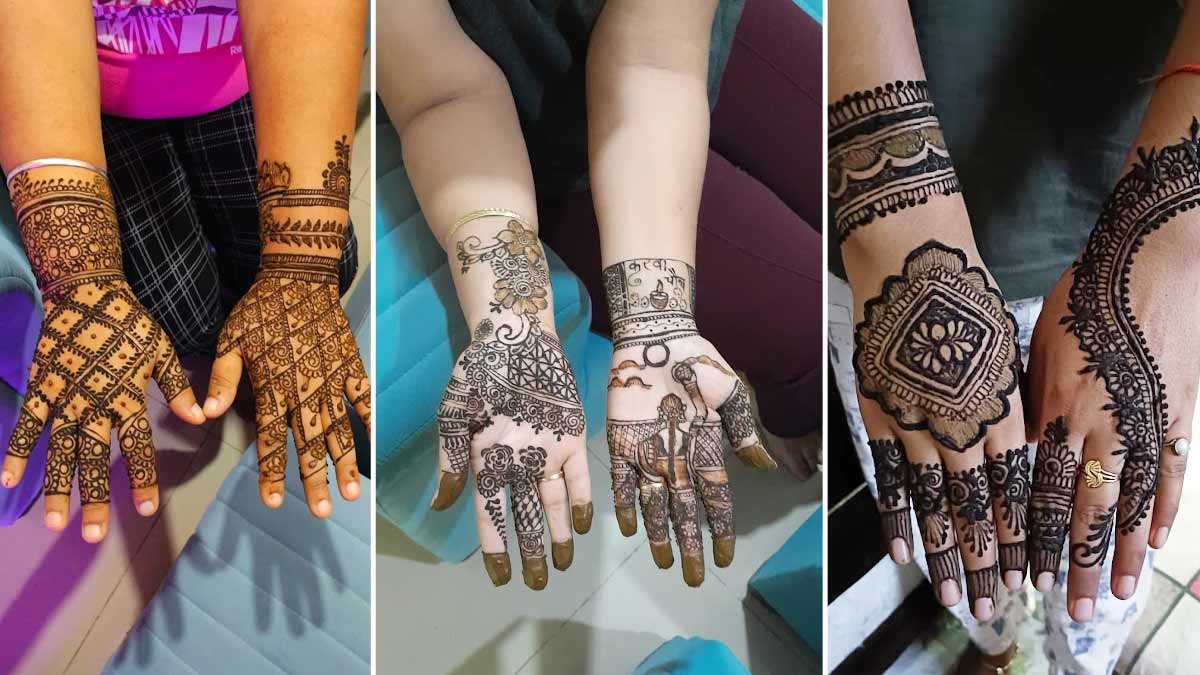
Front Hand Mehandi Designs: A Canvas of Expression
Front hand mehandi designs are like a blank canvas waiting for storytelling. Artists often focus more detail on the front of the hand, where visibility is highest. These mehandi design front styles often include:
- Full palm coverage
- Symmetrical patterns
- Bridal name initials hidden in the design
- Mandala centerpieces
Whether minimal or elaborate, these designs are key to traditional bridal makeup.
Step-by-Step Guide: How to Apply Mehandi at Home
If you’re planning to do mehandi yourself, here’s a simple step-by-step guide:
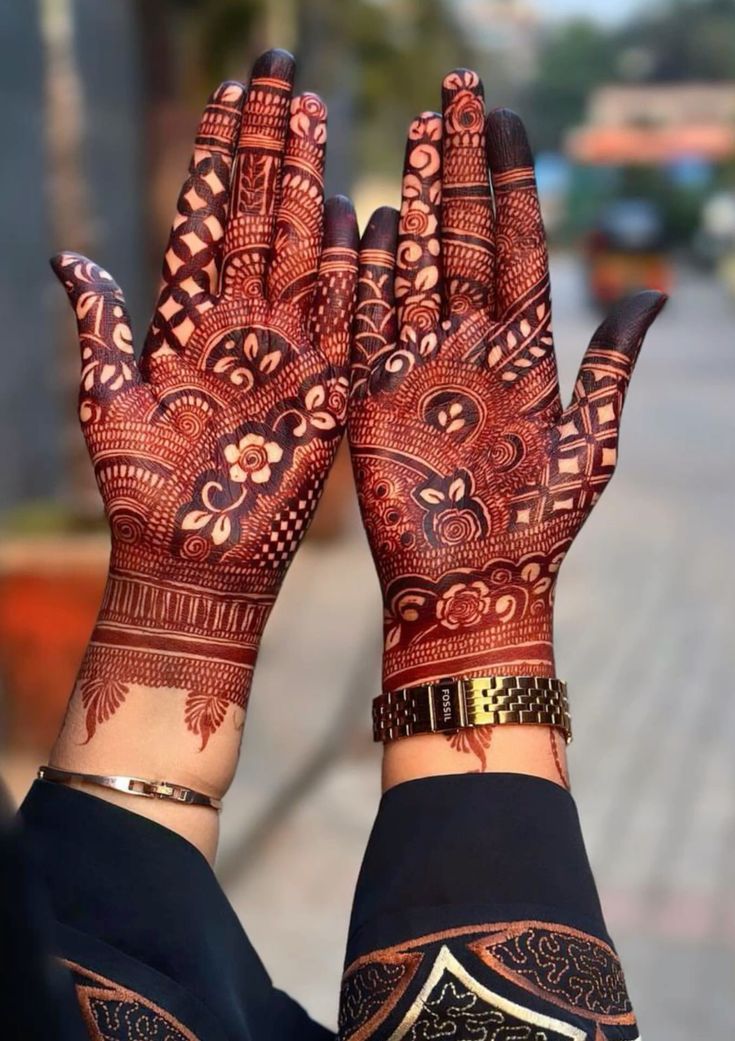
3. DIY Mehandi Application
| Step | Instructions |
| 1 | Clean hands thoroughly |
| 2 | Mix mehandi powder with lemon juice and oil |
| 3 | Fill the paste in a cone |
| 4 | Trace the outline first, then fill in details |
| 5 | Let it dry for 6–8 hours |
| 6 | Remove without washing for a darker stain |
Pro Tip: Apply a mixture of lemon juice and sugar to make the design stay longer and appear darker.
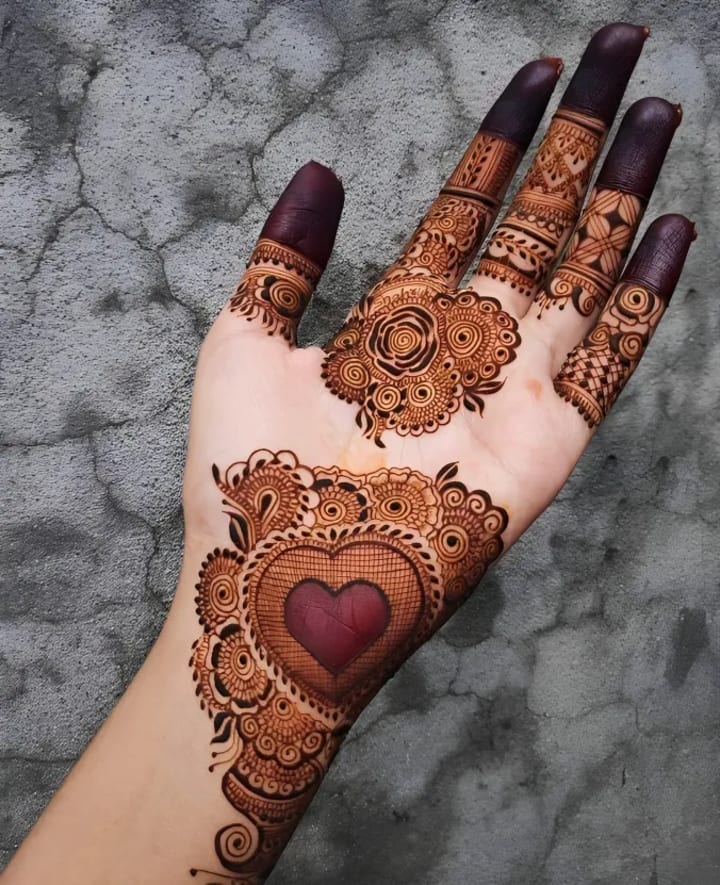
Mehandi in Pop Culture
Mehandi isn’t limited to weddings or festivals anymore. With the advent of cinema and pop culture, it has found a place in movies, fashion shows, and even music videos.
The movie “Mehandi Laga Ke Rakhna 2” reintroduced traditional rituals like mehandi to younger audiences in a relatable way. This sequel not only captured the emotions tied to weddings but also highlighted how such rituals remain timeless even in modern love stories.
Health Benefits of Mehandi
Mehandi isn’t just decorative; it also has health benefits.
Health Benefits of Mehandi
| Benefit | Explanation |
| Cooling Effect | Reduces body heat and stress |
| Antibacterial | Helps prevent infections |
| Natural Hair Conditioner | Strengthens and darkens hair |
| Anti-inflammatory | Soothes minor wounds and rashes |
Its use in Ayurvedic medicine is another testament to its versatility.
Bridal Mehandi: A Ritual Beyond Beauty
For brides, mehandi application is not just another beauty treatment—it’s a cherished event. Families and friends gather, traditional songs are sung, and the bride sits surrounded by love and laughter. Often, the bride’s name or the groom’s initials are cleverly hidden in the design, leading to fun post-wedding games.
Mehandi Artists: The Unsung Heroes
Behind every stunning mehandi design is a skilled artist who understands the depth of tradition and the intricacies of art. These professionals are not just painters—they’re storytellers who bring culture, creativity, and emotion to life through their designs.
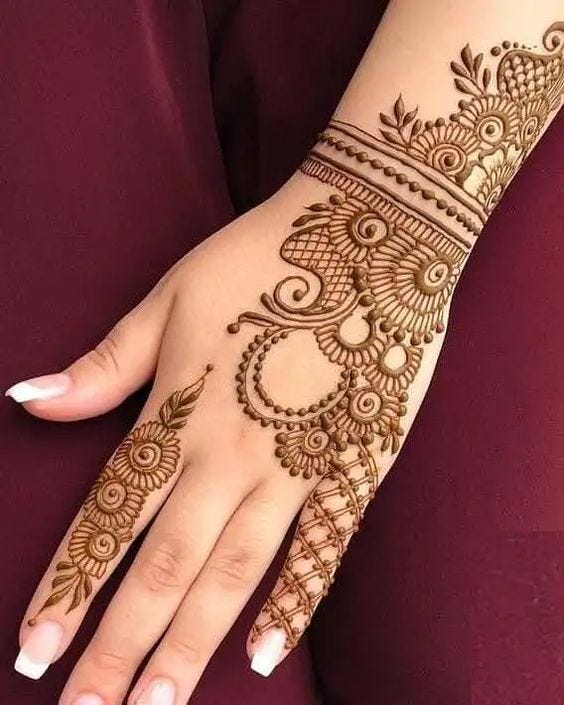
Tips to Make Your Mehandi Last Longer
You want that beautiful design to stay as long as possible. Here are some proven tips:
- Avoid washing hands for at least 6 hours after application.
Rub clove smoke over the design to deepen the color.
The Magnificence of Mehandi Designs and Their Rich Legacy
Mehandi, sometimes referred to as henna, is an art form that transcends time, space, and generations. It is not just a component of cultural value. It has been used for millennia in North African, Indian, Arabic, and Pakistani cultures. Mehandi designs remain essential to beauty and fashion, whether they are worn for a wedding, festival, or everyday adornment.
Origins of Mehandi Art in History

Mehandi art has its roots in ancient Egypt and India, when it was employed for both aesthetic and medicinal purposes. In order to make a natural dye, the paste is traditionally created from crushed henna leaves combined with water, lemon juice, and essential oils. It became famous as a type of body art throughout time due to its cooling effect, which made it a favorite in hot areas.
Mehandi has a long history in Indian culture and is seen as a positive sign. Invoking blessings is thought to be possible by using it at marriages, Karva Chauth, Eid, and other auspicious occasions.
Mehandi Design Types

Each of the many mehandi art forms represents the originality and legacy of its place of birth.
1. Common Designs for Mehandi
Style Origin Characteristics
India, Indiafills the palm with elaborate patterns
Middle East ArabicVibrant lines and floral patterns
Pakistani Pakistan: An Arabic and Indian blend
Morocco, MoroccoTribal and geometric designs
Western Worldwide Temporary tattoos in a minimalistic design
Mehandi’s significance in Indian culture

The use of mehandi in rituals has cultural significance in addition to being aesthetically pleasing. It stands for happiness, luck, and wealth. The mehandi design on a bride’s hands, particularly at Indian weddings, symbolizes emotion, love, and tradition in addition to being a decorative element.
A common misconception is that a deeper level of love between lovers is indicated by a darker mehandi stain. The custom is made even more charming by this sentimental attachment to a fairly straightforward leaf paste.
Contemporary Innovation and Adaptation
The current generation combines innovation and heritage. Creative mehandi designs abound on digital platforms, providing a never-ending source of inspiration. In order to make each design distinctive, Mehandi artisans are currently experimenting with new colors, patterns, and shapes.
The evolution of trends has been greatly impacted by social media. In order to help others find ideas for their special day, brides and artists regularly share their original mehandi artwork online.
Recognizing Mehandi Patterns

Mehandi designs can be either basic or very complex. Every component has a distinct meaning. This is a brief guide:
Frequently Used Mehandi Motifs and Their Interpretations
Symbolism of the motif
The PeacockGrace and beauty
The PaisleyLuck and fertility
Lotus Enlightenment and Purity
Mandala for Meshwork ProtectionCompleteness and unity
Bel MehandiSmooth continuity and flow
A common element in many designs is the mehandi bel, which is translated as a henna vine. It weaves through the palm or fingers like the thread of nature, giving any mehandi pattern continuity and grace.
Front Hand Mehandi Designs: An Expressional Canvas

Designs for mehandi on the front are like a blank canvas ready to be filled with narrative. Since the front of the hand is more visible, artists frequently concentrate more detail there. These front styles for mehandi designs frequently consist of:
• Complete palm protection
Symmetrical designs
• Initials of the bridal name are concealed within the pattern.
• Centerpieces for Mandalas
These patterns, whether simple or intricate, are essential to traditional bridal makeup.
How to Use Mehandi at Home: A Comprehensive Guide
Here is a straightforward, step-by-step tutorial for mehandi if you intend to perform it yourself:
Application of DIY Mehandi

Step-by-step directions
1 Wash your hands well.
2 Combine oil, lemon juice, and mehandi powder.
3. Create a cone out of the paste.
4.Fill in the details after tracing the outline.
5 Give it six to eight hours to dry.
6 If the stain is darker, remove without washing.
Pro Tip: To help the pattern last longer and seem darker, apply a solution of sugar and lemon juice.
Pop Culture’s Use of Mehandi

Mehandi is no longer only used at festivals and weddings. It has been incorporated into movies, fashion presentations, and even music videos since the rise of pop culture and film.
Traditional customs like mehandi were relatably presented to younger audiences in the film “Mehandi Laga Ke Rakhna 2.” In addition to capturing the feelings associated with weddings, this follow-up demonstrated how these customs endure in contemporary romances.
The Health Advantages of Mehandi
Mehandi provides health advantages in addition to being aesthetically pleasing.
Mehandi’s Health Benefits
Benefit Description
Effect of CoolingLowers body temperature and stress Antimicrobialaids in avoiding illnesses
Conditioner for Natural HairAnti-inflammatory; darkens and fortifies hairrelieves mild rashes and sores
Its adaptability is further demonstrated by its use in Ayurvedic medicine.
Beyond Beauty, Bridal Mehandi Is a Ritual Applying mehandi is a treasured ritual for brides, not just another cosmetic procedure. Traditional songs are sung, families and friends congregate, and the bride sits amid laughter and affection. Frequently, the design deftly conceals the bride’s name or the groom’s initials, resulting in entertaining post-wedding activities.
Artists of Mehandi: The Silent Heroes
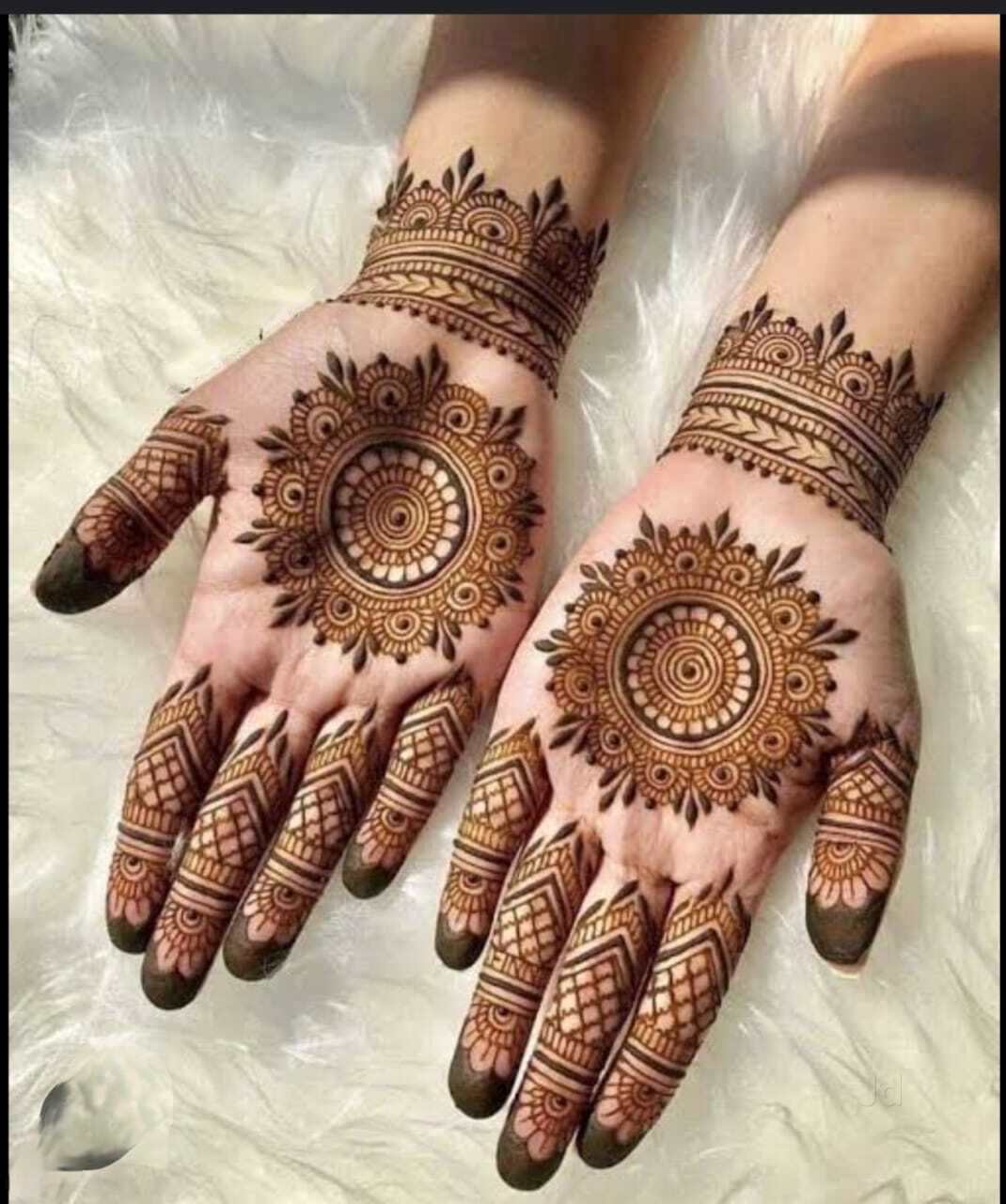 Every exquisite mehandi design is the result of a talented artist who is aware of the complexities of art and the depth of tradition. Through their designs, these artists bring culture, creativity, and emotion to life. They are more than just painters.
Every exquisite mehandi design is the result of a talented artist who is aware of the complexities of art and the depth of tradition. Through their designs, these artists bring culture, creativity, and emotion to life. They are more than just painters.
Ways to Extend the Life of Your Mehandi
You want to preserve that lovely design for as long as you can. Here are some tried-and-true pointers:
• After applying, wait at least six hours before washing your hands.
• To intensify the color, rub clove smoke over the pattern.
Regularly moisturize, but don’t use too much oil.
• During the first 24 hours, avoid contact with water and chemicals.
For Every Occasion, Mehandi

There is a design for every occasion, including Teej, Eid, Diwali, and weekend parties. Because of their adaptability, mehandi designs are ideal for both formal and informal settings.
Designs can be as simple as designs on the fingers or as complex as sleeves that completely enclose the hand and arm. For children and teenagers, simpler designs work best, although the intricate details of bridal patterns might take hours to complete.
The beauty of mehandi art is found in the memories and feelings it arouses in addition to its aesthetic appeal. From mehandi bel vines to mehandi design front patterns, from old customs to contemporary adaptations, this art form keeps evolving while staying loyal to its origins.
Therefore, never undervalue the appeal and power of mehandi, whether you’re getting ready for a large event or just want to beautify your hands. Allow each swirl, dot, and pattern on your hands to convey the language of beauty and tradition.
- Moisturize regularly but avoid too much oil.
- Stay away from water and detergents in the first 24 hours.
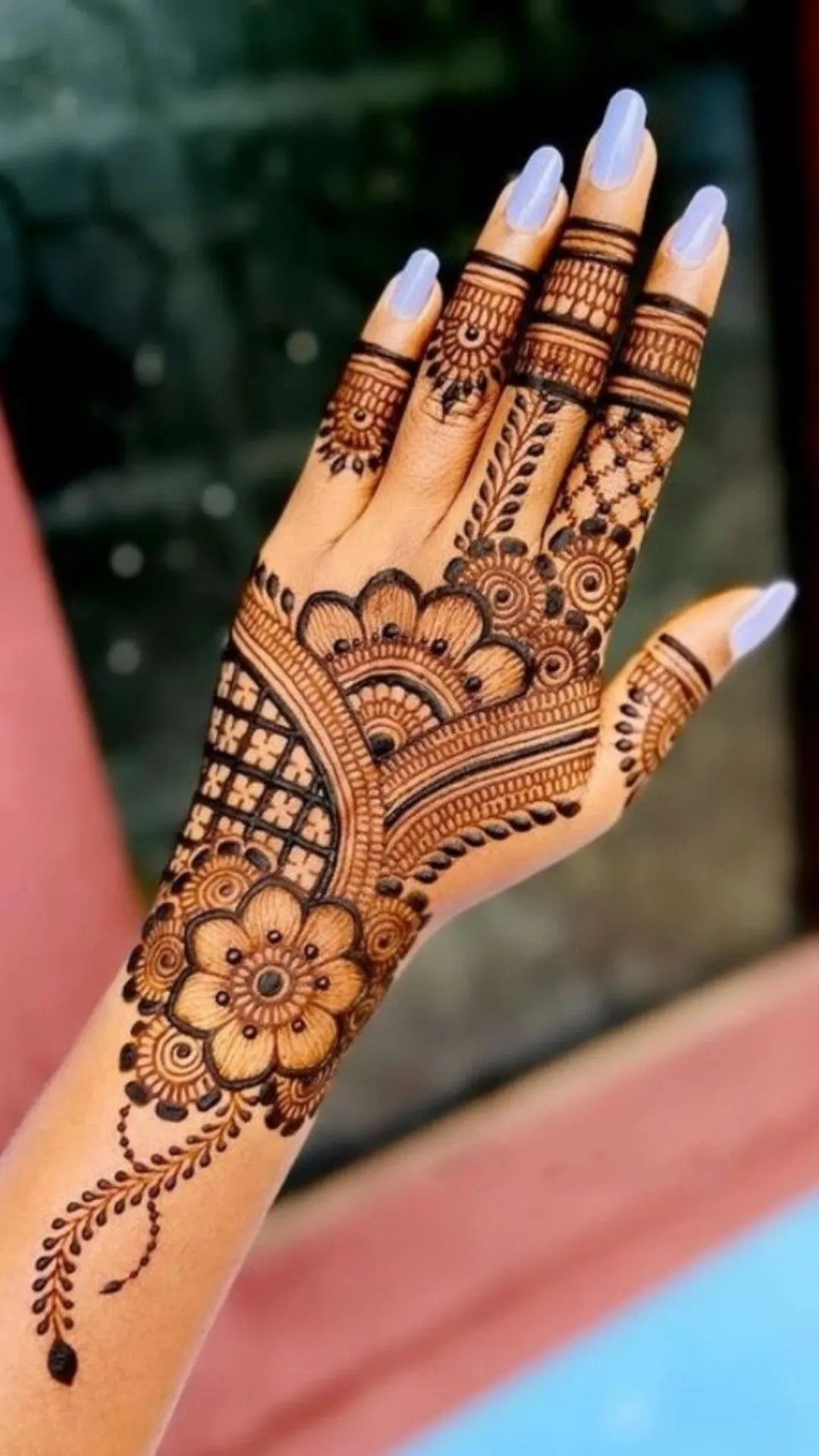
Mehandi for Every Occasion
Whether i’s Diwali, Eid, Teej, or just a weekend party, there is a design for every moment. The versatility of mehandi designs makes them perfect for casual and formal occasions alike.
Designs can range from finger-only patterns to elaborate sleeves that cover the entire hand and arm. Simpler designs are ideal for kids and teenagers, while bridal patterns can take hours to complete due to their detail.
Final Thoughts
The beauty of mehandi art lies not just in its visual appeal, but in the emotions it evokes and the memories it creates. From ancient traditions to modern adaptations, from mehandi bel vines to mehandi design front patterns, this art form continues to evolve while remaining true to its roots.
So whether you’re preparing for a big event or simply want to adorn your hands, never underestimate the charm and power of mehandi. Let your hands speak the language of heritage and beauty—through every swirl, dot, and pattern.
